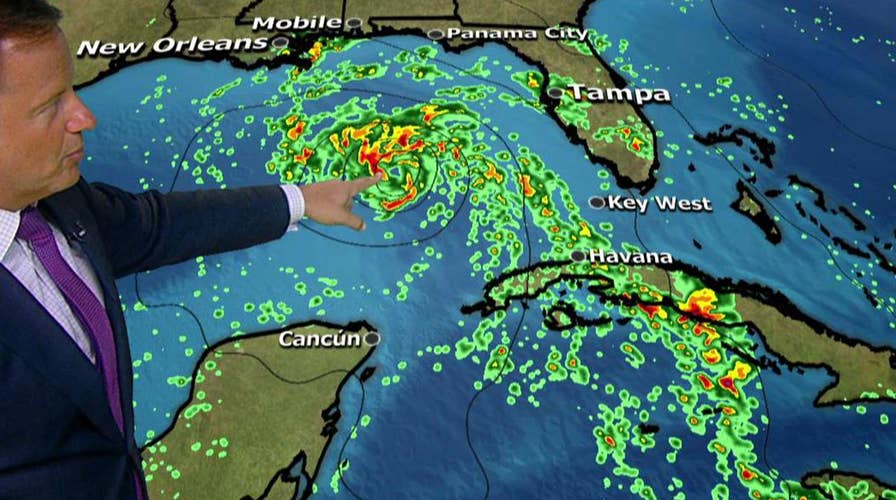Alberto is first named storm of 2018
Subtropical storm Alberto is the first tropical weather system of the 2018 hurricane season and could bring heavy rain to Florida and the Gulf Coast; chief meteorologist Rick Reichmuth reports from the Fox Extreme Weather Center.
As people gear up for a long holiday weekend, officials are warning that the first subtropical storm of the 2018 hurricane season is expected to bring “tropical storm-force winds” and “storm surges” across the central and eastern Gulf Coast on Sunday.
Subtropical Storm Alberto is the first named storm this year’s hurricane season, and according to the National Hurricane Center (NHC), it is expected to bring heavy rain and flash flooding to the Yucatan Peninsula, western Cuba, Florida and the northeastern Gulf Coast this weekend.
The NHC said Friday afternoon that Alberto was “meandering over the northwestern Caribbean Sea.
With the storm's winds already reaching 40 mph, officials say that it is strengthening, and the biggest threat is “heavy rain and rip current.”
Subtropical storms, like Alberto, can develop into tropical storms, which can ultimately strengthen into hurricanes. Alberto has a less defined and cooler center than a tropical storm, and its strongest winds can be seen farther from its center.
The NHC predicts that Alberto could reach tropical storm status overnight, although it’s too early to predict where that could occur and what magnitude the storm system might achieve.
The National Oceanic and Atmospheric Administration announced that this will be an active hurricane season, with perhaps 10 to 16 named storms and five to nine hurricanes. One to four hurricanes could be considered “major” with sustained winds of at least 111 mph.
If the forecasts hold true, this will be an above-average hurricane season, with an average one producing 12 named storms, six of which become hurricanes, including three major hurricanes.
The hurricane season for the Atlantic officially begins June 1 and runs through Nov. 30.
The Associated Press contributed to this report.
